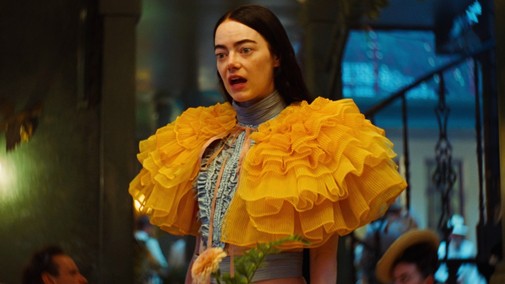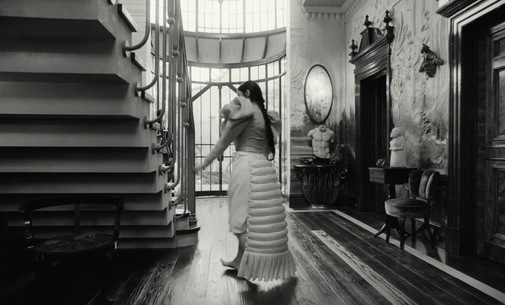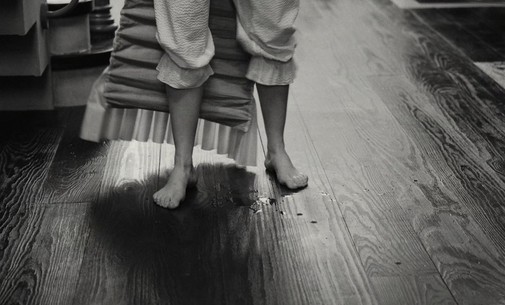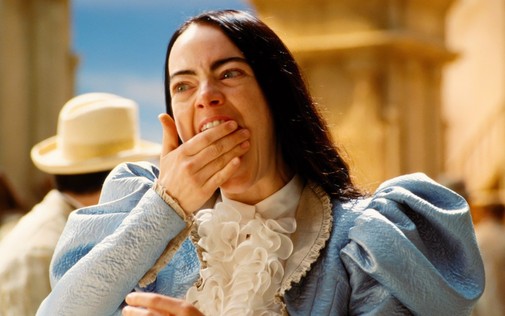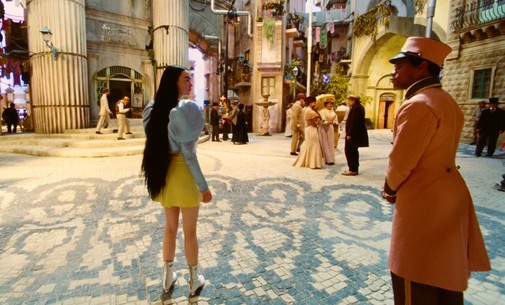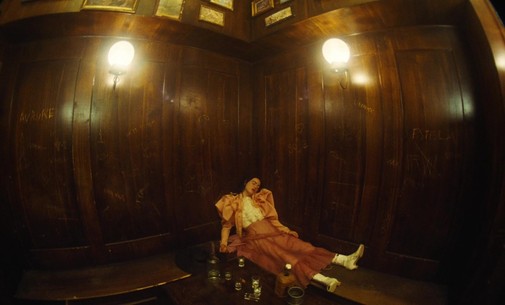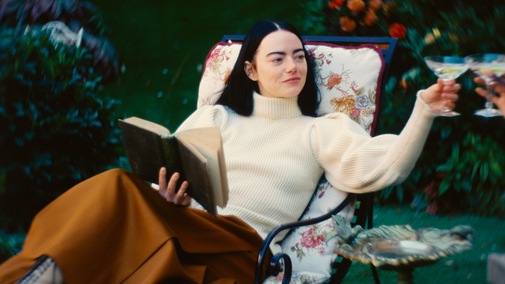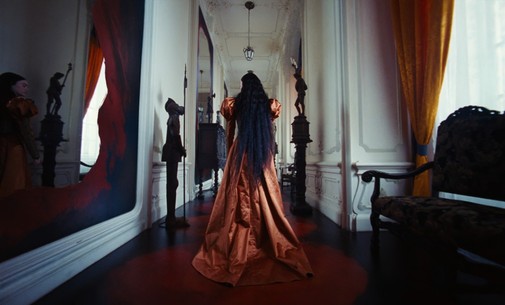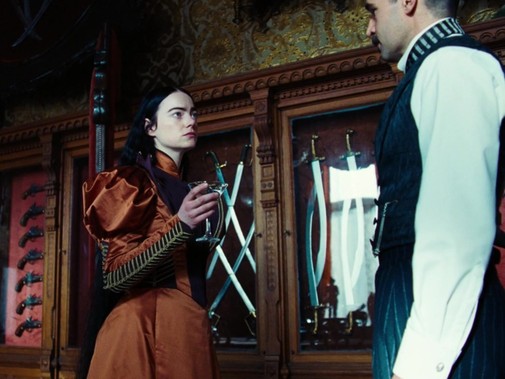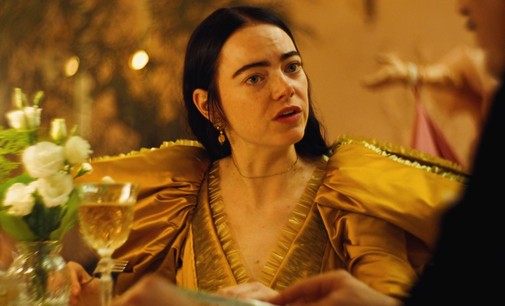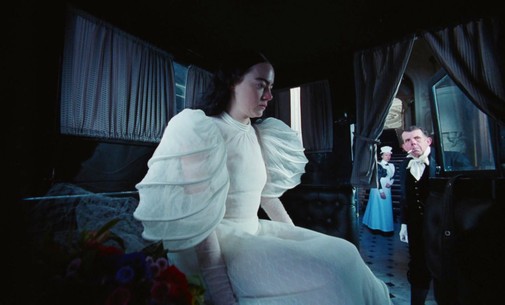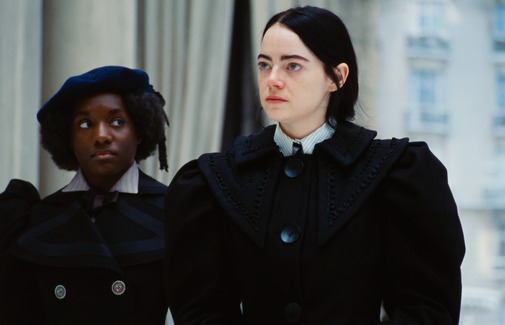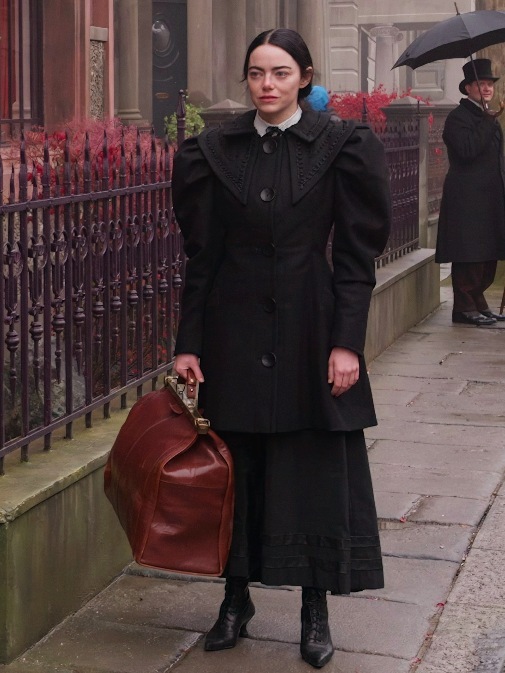The last time an Emma Stone movie won the Best Costume Design Oscar, I ranked her character's many looks. So, it seems appropriate to do the same this year. Once, there was Cruella, but now, one has Poor Things' Bella Baxter to consider.
Breaking the trend of repeat winners and legendary designers finally getting their due, Holly Waddington is a relative newcomer to the costume design big leagues, even though she has worked with names like Sandy Powell and Jacqueline Durran during her tenure in Angels Costume House. Training her craft in that famed establishment, the designer specialized in period costuming, though she's hardly a stickler for historical accuracy. Bored by exact recreation, the artist prefers to play with anachronism, making her a perfect fit for Yorgos Lanthimos' cinema. Indeed, she met the director through Tony McNamara after she costumes The Great's pilot, another take on period regality with a wacky twist…
In interviews, Waddington has spoken about the collaborative nature of Poor Things, but she also highlighted how much of the pre-production process was done during lockdown, Zoom meetings across countries, and whatnot. With her director, research was a first step in finding the look, working from 19th-century photography and painting. For example, Egon Schiele was a reference for the color story and general conception of Bella's look, especially the hair. Otto Dix and George Grosz's work also influenced the palette. Those references came from Lanthimos, who wanted a style that wasn't too "period" nor too "sci-fi," a middle ground of sorts.
That lack of fidelity to fact led him to stray from Alasdair Gray's period specificity. Set in 1880s Glasgow, the literary original was pushed to the 1890s when transferred to the screen. People unfamiliar with fashion history may suppose that's not a significant difference, but style changed at an alarming pace in the Victorian Era, with dramatic silhouette changes occurring over the span of just a couple of years. This choice was prompted by Lanthimos, who gravitated to 1890s photography of women in huge leg-o'-mutton sleeves. On Bella, they are like a pair of lungs, taking up space and making her into a commanding figure.
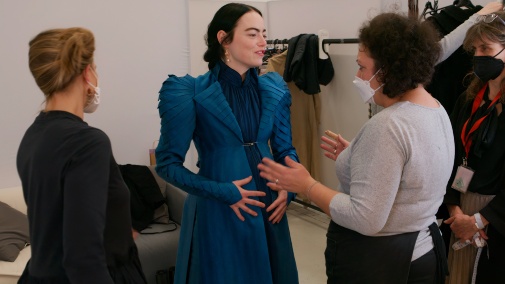
The historical oddities become more empowering than cumbersome through the Greek auteur's lens and Stone's performance. Then again, coherence, consistency, and internal logic weren't Lanthimos' priorities, as Waddington explained. Style unbound by reason was closer to the point. For practical matters, only one concern emerged. You see, the director was especially interested in how clothes came off, how they'd functionally behave during sex scenes. Remember that as we peruse Bella Baxter's best costumes in this sartorial top ten.
On a last note, I didn't include Stone's blue dress for the film's first shot for one simple reason – that's not Bella Baxter. At no point is that piece of materialized suicide blues worn by the heroine, with Victoria Blessington as its model. Still, it deserves an honorable mention both for its chromatic storytelling strength and the sleeves' armor-like construction. Facing the abyss, Bella's mother and bodily self appear constricted by her husband's influence. But more on that later. At number ten in the ranking, one finds…
10) A LOBSTER TAIL
In the film's first act, there's a vague idea that Bella's frills and childlike costumes are Mrs. Prim's doing. Godwin's assistant-turned-nanny imposes Victorian morality on the baby-brained woman. They're not kids' clothes but depict a doll-like look unto Bella. Even the scale of the fabrics plays into this, going for such thick taffeta that Stone appears trapped in the costume, a figurine atop a cake with too much frosting on top. Well, that would be the effect if she ever wore the outfits properly. Like a kid who stops dressing halfway through, she's all done up from the waist up. Go down, and you'll find underwear and the rare 1880s detail in the form of a lobster tail bustle.
That bestiary name is very appropriate for the film's wardrobe. Let your eye travel through the frame, and you'll find a litany of organic textures, like the watermarks of moiré, the porosity of synthetic blends, and bumpy weaves. Waddington has described some of those textures like those of sea anemones. Scientific illustrations further inspired the arrangement of sleeves, be it botanic or zoological, related to exotic flowers and shells. These tactile choices helped save the costumes for this first act. You see, Waddington was only informed that those God's House scenes would be in black-and-white two weeks before the shoot started. There was no time to adapt.
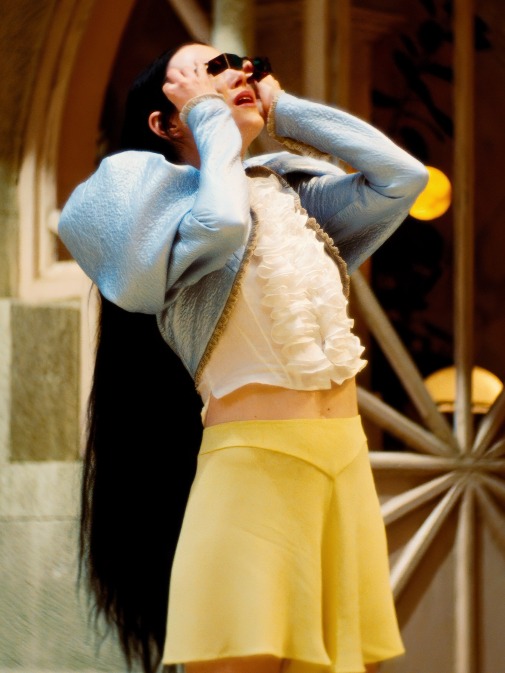
09) LISBON SOJOURN
Though she initially drifted to bodily shades of pink, maybe the red of spilled viscera, a note from Lanthimos made Waddington look at rotten apples as a reference to her palette – all those yellows married to bruise. In Waddington's words, "yellow and black are nature's warning colors." By dressing Bella in this combination, she ensured we'd never miss her in the frame and that she'd never fade or assimilate into the environment. Bella is always conspicuous, and you're made to pay attention as viewers. This is especially apparent during her lonely walks through Lisbon on her Grand Tour's first stop.
But more than a warning, the sunny yellow and sky-blue combination is reminiscent of a fairytale princess, optimism made fashion. In Waddington's conception, there's this notion that Mrs. Prim also packed Bella's suitcase. However, when out on her own, it's up to the heroine to pick and choose what to wear, creating chaotic ensembles that reflect an anarchic infantility. Nothing matches, underwear becomes outerwear and so forth. Gradually, a sense of purpose emerges, a personal style of sorts. For the Lisbon adventure, the main inspiration was Jodie Foster's teen prostitute ensembles from Taxi Driver. That's partly where those 30s/70s-esque tap/hot pants came from.
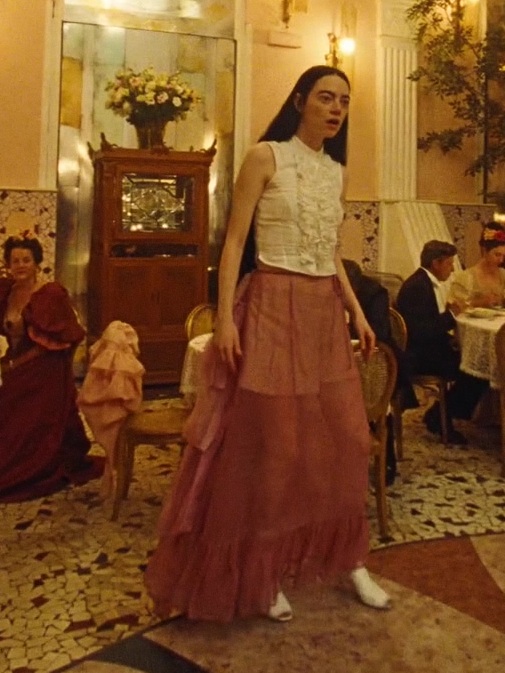
08) FIT FOR A DANCE
Many of Bella's bodices are incomplete pieces that would be added to other pieces to fill and conceal a woman's cleavage. They work like the dickeys you might see on modern tuxedos. Only Bella wears them independently, another childlike provocation that defamiliarizes period details. And because of the shades of pink in rows of concentric pleats, Waddington nicknamed the pieces "vagina blouses." She wears one of those for the first time she ever dances, pulling Duncan into a discombobulated choreography that's more spasmodic than graceful. But that's not the only detail worth pointing out in this Lisbon ensemble.
Her skirt is a petticoat meant to be worn beneath outer layers, made sheer to reveal the underwear beneath. If possible, this game of peekaboo continues to the tips of Stone's toes. Notice the ankle boots full of weird cutouts, circular holes around the ankles and at the tip. They reveal skin and toes and beget a disruptive awkwardness that keeps Bella from being an object of sartorial admiration. She's fascinating but never traditionally beautiful. In this case, the footwear also perpetuates the character and film's anachronistic nature. It's an André Courrèges reference from 1960s fashion rather than some existent Victorian piece.
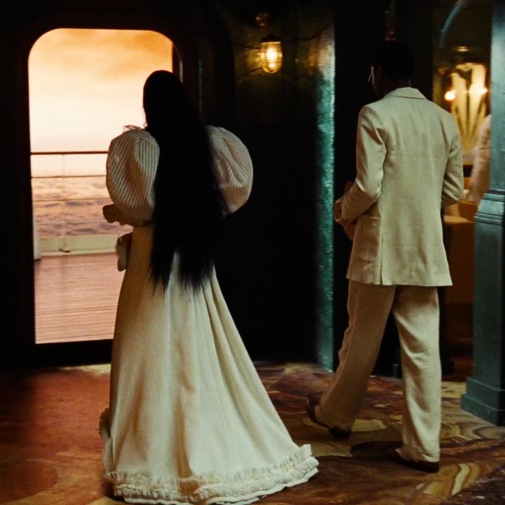

07) WHITE STRIPES
At God's House, Bella dresses like a hyperactive toddler some caretaker tried to swaddle in frills. When she's walking around Portugal's capital city, she's a slightly older child who still doesn't quite know how to dress herself. By the time her scoundrel lover has smuggled her into a ship bound for Alexandria, her sartorial evolution has entered its teens. In other words, she starts to make full outfits, experimenting with proper fashion, and even wears this brilliant white ensemble, one of her most historically accurate pieces and whiff of colonial Britishness for good measure. The contrast of its paleness against the orange air of Alexandria and her bedroom's golden hues makes for an arresting image. With her tear-streaked face, reddened cheeks, and black hair, Emma Stone is a painting come to life.

06) FINALE FINERY
At the end of her journey, Bella hasn't become assimilated into the Victorian status quo, but she has reached a level of maturity heretofore out of reach. Her last outfit reflects a new comfort and determination, the attire of a medical student with a feminist streak. And for the first time, her clothes are just that – clothes – rather than a surrealist fantasy. Indeed, the biking jumper she wears is copying a famous knitwear piece from the 1890s that can be found in the Met archive. Even if unintentional, that piece's connection to the history of Dress Reformers underlines the heroine's standing in the world, connecting her to proto-Feminist causes at the genesis of movements like the Suffragettes. As we leave her, Bella is a woman confidently walking into her future, the unknown a promise, a challenge rather than a nightmare.
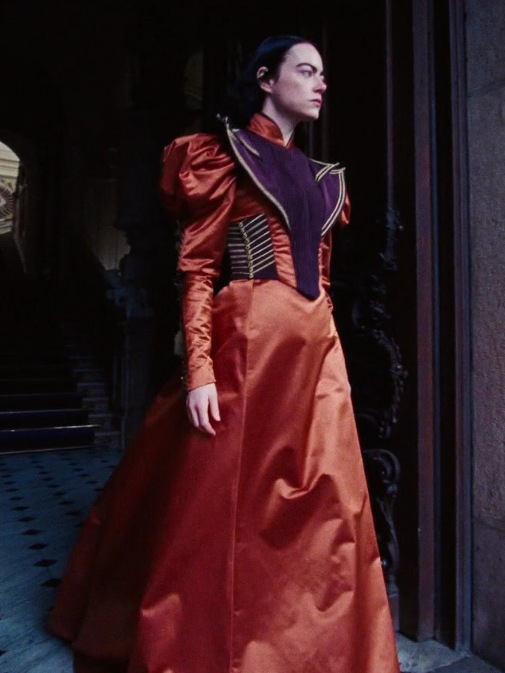
When returning to her husband/father's house, Bella Baxter is subsumed in the rules of 1890s propriety. For the first time, she is not a force unbound, her clothes incapable of restraining her. This dress is directly inspired by a piece housed at the Met. The original is a walking suit intended for outdoor activities, but the General won't let his property go beyond the property gates, a prison that renders sturdy wool into satin. The stripes and piping suggest military garb. They also convey an almost insect-like nature, as if Bella was a bug crushed between panes of glass for the man's pleasure. Narratives can be done through text, but they are also expressed in the images of this visual medium we call cinema. Costume design is an intrinsic part of that.
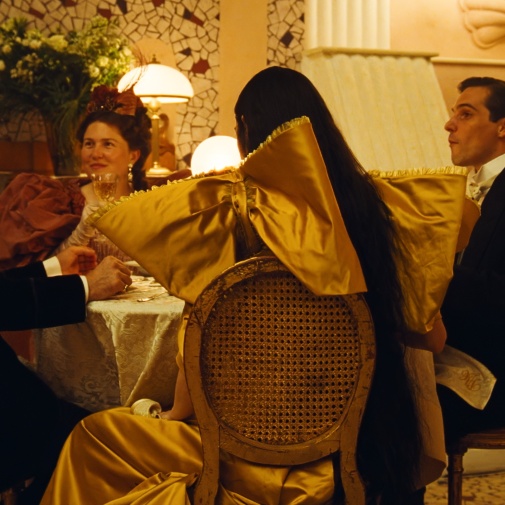
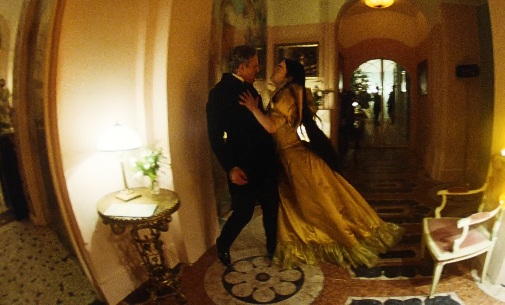
As much as there's a gesture toward history in Waddington's design, there are as many moves away from it. For example, Stone wears no corsetry despite its importance for achieving a period look and supporting the inner structures of period garments. Moreover, the materials themselves are a mismatch of past, present, and even future. Latex and plastic can appear in bizarre places, like when they serve as a lace substitute for the trimmings of this dinner dress she wears while in Lisbon. It's such a bizarre creation, a mix of techniques old and new, aesthetics that should contradict one another, all sutured together and given life by the camera's gaze. Godwin may be the mad scientist, but Holly Waddington is Poor Things' sartorial Frankenstein.
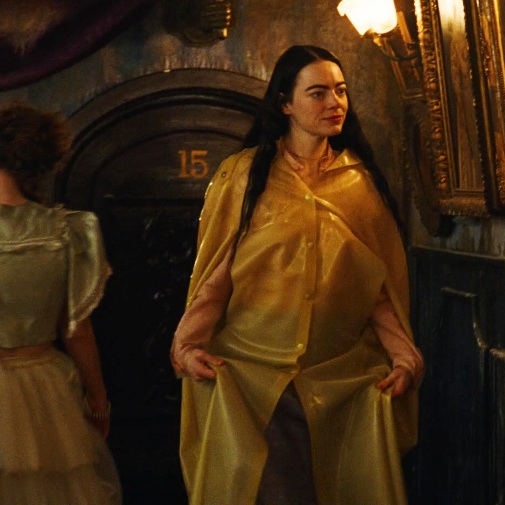
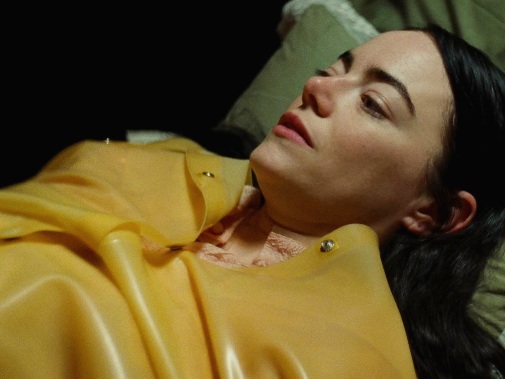
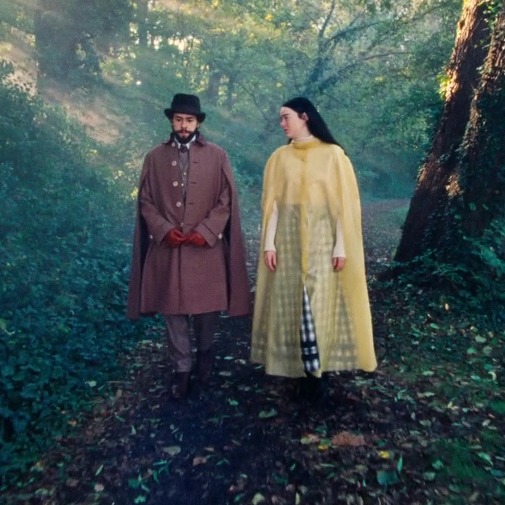
03) THE CONDOM COAT
Bella's latex cape, similar to Godwin Baxter's lab coats, is inspired by condoms. Even its color, a pale yellow, comes from Victorian-era prophylactics, mostly made of skin and animal insides, cured and processed for medicinal purposes. The material also connects her to her brothel colleagues. The French sex workers are closer to fantasy than anything else, bizarre in ways completely divorced from period fashion. They are more frames for nakedness than concealment. And yet, the effect isn't erotic so much as it is destabilizing, teetering on the edge of grotesque. Mixing such designs with heavy fabrics denies their tantalizing nature as if you can feel the scratch against the skin. Bella, however, remains slippery in her latex, which later includes a pair of skin-colored tights.
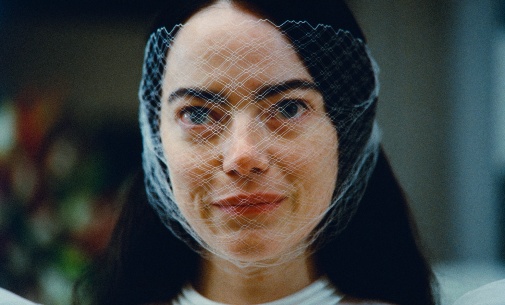
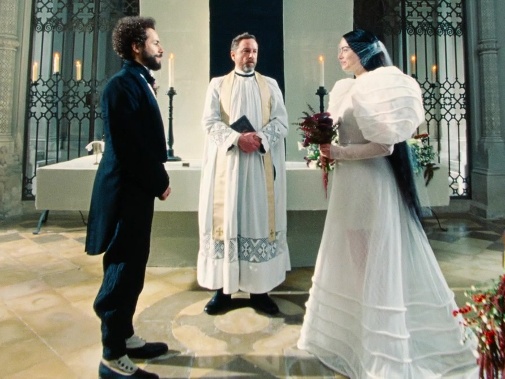
The wedding gown is a contradiction materialized. On the one hand, Waddington creates the illusion of a cage through the silk tubing and piping. On the other hand, whatever idea of constriction is denied by the fabric's translucence and how you can almost glimpse the actress' naked body beneath. This was Emma Stone's favorite costume of the lot, and the veil – in lace, with a geometric motif – was her idea, too. While the designer didn't know how to resolve the headwear, the actress wrapped her head with the material, knotting it in the back like an improvised take on the wedding regalia. In various interviews and featurettes, the designer and actress have said this was Stone's favorite of her costumes. I can see why.
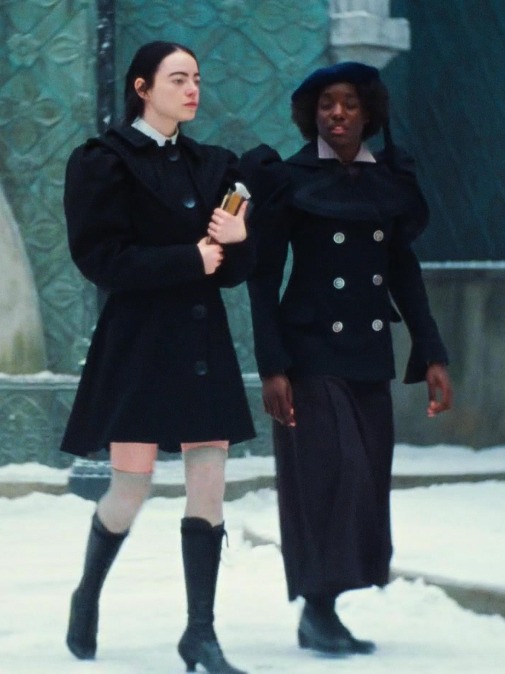
01) BELLA'S STUDENT SUIT
Another of Stone's ideas came with Bella's student suit to infiltrate the Parisian Medical College. In the snowbound French capital, she wears only the two-piece suit jacket, exposing her legs to the cold. She covers up in London, where bright sunshine paints God's house in golden hues. These dynamics are so odd they almost take you out, reminding the viewer of Bella's essential oddity, how alien she is to Humanity even as she learns to embrace it. Moreover, the menswear inspiration shows her taking strides into a world dominated by men, affirming she belongs there with something as simple as a black suit. It may seem idiotic, but sometimes the most uncomplicated design can be the most powerful, especially when surrounded by the kaleidoscopic insanities of Poor Things.
What about you, dear reader? What's your favorite Bella Baxter fit?
